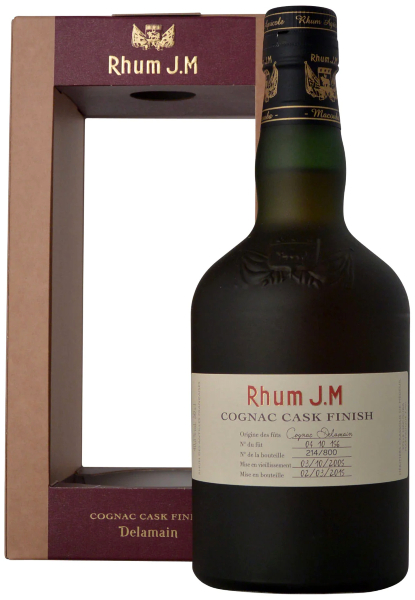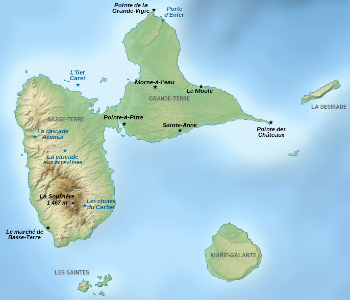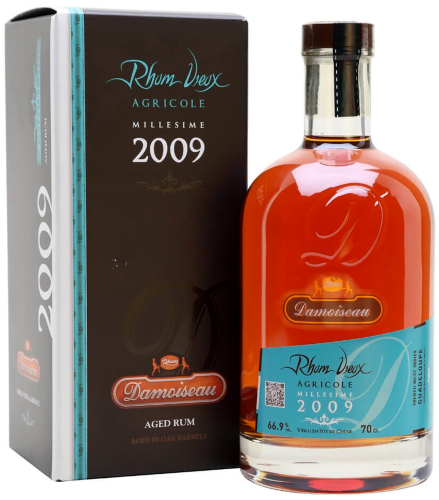This is the fourth review of a Rhum J.M from Martinique on these pages. After the other three I tasted and reviewed here: Cuvée 1845, Millésime 2002 and XO, I more than happily bought a set of three special cask finishes, the Cognac finish at hand but there was also a Calvados finish as well as an Armagnac finish. For popping the cork on one of these three, I chose this Cognac finish first, because around the time of opening I also had this Port Charlotte CC:01 open (CC = Cognac Cask), and I wanted to see if the Cognac bit would be a common thread between the two. I never actually really got to comparing the two back then, it would have made no sense anyway, comparing a Rhum Agricole to a Peated Whisky (higher in ABV as well). The CC:01 is now long gone, and remembering the taste of it and comparing it, from memory, to this J.M, nope, not really clear in any of them that it had to do with Cognac. Not really sure what markers to look for to be honest, because both do not taste like a Cognac whatsoever. The label states that the Rhum aged for 8 years in Ex-Bourbon casks and was finished for several months in 350 litre Cognac casks. Less than 5 full months in this case, since this was distilled on 03/10/2005 and bottled 02/03/2015.
 Color: Full gold, just shy of orange gold.
Color: Full gold, just shy of orange gold.
Nose: I haven’t tried the Calvados finish yet, but if I had gotten this blind, I would say this would be the Calvados version, because it smells of apples and…well, Calvados. There is something Calvados-y about a Rhum Agricole anyway. So this one is fruity, slightly sugary as well and overall very pleasant. Definitely a sunny expression. Well balanced yet on the nose not very complex. Nice soft wood, with nice soft ripe yellow exotic fruits and thus apples. No citrus and not acidic, not sweet either. Lots of fruit and it keeps on coming, overpowering the wood entirely now, yet leaving room for a more creamy and vanilla-like aroma, giving it some more body. Also, a more earthen and dusty note pops up, as well as some sunshine after rain and now, after sipping, some licorice, runny caramel and chewy toffee comes forth. A wonderful, friendly and positive nose, bringing the Caribbean to my home on this grey March day. I needed to work this nose a bit, but now that it is there, I very much like the J.M character in this again. It is a special spirit. Smells great. After a while in my glass some (sweet) licorice notes pop up, giving it slightly more backbone.
Taste: Aiii, 40.5% ABV was a mistake. Quite dull on entry. However, it starts most definitely again with the apply and/or the Calvados-y note I also got from the nose. Medium sweet and definitely fruity. The wood exerts itself some more here and also shows some bitterness, adding some spices to the whole. It is waxy and slightly nutty. By the way, the bitterness depends a bit on the day and, as always, depends very much too on you as a taster, because the second time around I found it less bitter then the first time. Simpler than the nose was, and simple is the right word here. It is less balanced as well. I’m missing a part of the big fruit that came from the nose, where is that? So less fruit is noticeable, probably because there is more soft wet wood and spicy wood on the palate that sticks to the roof of my mouth. The palate is definitely closer to a Cognac than a Calvados, and differs quite a lot from the nose. Now I would give it more than 9yo. The body is alright, a bit of a mediocre, yet nice, Rhum Agricole to be honest. However, I liked all three J.M’s I reviewed earlier more. This one seems to be not quite sure about its identity. It’s a bit thin and after the sunny nose a bit too bitter as well. Nope, not a fan of this particular one. A great R(h)um is never great by the nose alone.
When sipping this casually, I never cared too much for it, but I always thought that was because of my carelessness when sipping, so when analysing it I was really surprised how great the nose really is. I must have been wrong all this time. However now that I have tasted it again, I know exactly why I didn’t care for it all that much. It falls really short on the palate, at least it doesn’t gel with me. Seems to be lacking some balance, and the less interesting note on the palate seem to dominate over the more pleasant ones. It reminds me a bit of a Whisky that has seen a wee bit to much air in its lifetime. Maybe this J.M doesn’t like air all too much. Ah well, you can’t win them all.
Points: 80
 Color: Dark orange brown.
Color: Dark orange brown. Haagsche Hopjes, a Dutch hard coffee candy. Well isn’t this turning into a treat? Very nice. With a taste like this, who needs complexity? In the end, this one is on the palate still a wee bit too thin. Could have done with slightly more points on the ABV-scale, 50% seems about right, but this is just a minor gripe. I haven’t tasted this at 50%, so I really don’t know if it would have been better. The finish and the aftertaste retain quite a lot of fruity sweetness. To be hones it could have done with slightly less of it. Highly drinkable every time, but not one keep pouring one after the other. If your glass is empty refill it with another Amrut. I’ll finish this like I started, really sad there aren’t any more Amrut Double-casks around. Please Amrut do some more, surprise us. I’ll even forgive you if you keep them at 46% ABV, for continuity purposes.
Haagsche Hopjes, a Dutch hard coffee candy. Well isn’t this turning into a treat? Very nice. With a taste like this, who needs complexity? In the end, this one is on the palate still a wee bit too thin. Could have done with slightly more points on the ABV-scale, 50% seems about right, but this is just a minor gripe. I haven’t tasted this at 50%, so I really don’t know if it would have been better. The finish and the aftertaste retain quite a lot of fruity sweetness. To be hones it could have done with slightly less of it. Highly drinkable every time, but not one keep pouring one after the other. If your glass is empty refill it with another Amrut. I’ll finish this like I started, really sad there aren’t any more Amrut Double-casks around. Please Amrut do some more, surprise us. I’ll even forgive you if you keep them at 46% ABV, for continuity purposes. Color: Copper gold, yes, let’s just say orange gold!
Color: Copper gold, yes, let’s just say orange gold! The previous post, which was quite long to be honest, was about a somewhat experimental special release Ardbeg called
The previous post, which was quite long to be honest, was about a somewhat experimental special release Ardbeg called  Color: Pale orange gold, with an ever so slight pink hue.
Color: Pale orange gold, with an ever so slight pink hue. Color: Light gold, not pale.
Color: Light gold, not pale. Guadeloupe is an overseas department and region of France and it consists of threes. It has three main islands and has three Bellevue distilleries. From west to east we first have the island of Basse-Terre, easy to recognize because of its mountains and an active stratovolcano called “La Grande Soufrière”. Last eruption: 1977 (phreatic eruption, steam). The last magmatic eruption was in 1580 (give or take 50 years, sice nothing was recorded). The soil of Basse-Terre, and this probably doesn’t come as a surprise any more, is volcanic and thus fertile, very suitable to grow many variants of sugarcane. More to the east lies the island of Grande-Terre, separated from Basse-Terre by a narrow body of water called Rivière Salée. Grande-terre is flat and has a limestone soil. A bit farther away to the east and more to the south lies Marie-Galante. Also flat with a limestone soil and thus akin to Grande-Terre.
Guadeloupe is an overseas department and region of France and it consists of threes. It has three main islands and has three Bellevue distilleries. From west to east we first have the island of Basse-Terre, easy to recognize because of its mountains and an active stratovolcano called “La Grande Soufrière”. Last eruption: 1977 (phreatic eruption, steam). The last magmatic eruption was in 1580 (give or take 50 years, sice nothing was recorded). The soil of Basse-Terre, and this probably doesn’t come as a surprise any more, is volcanic and thus fertile, very suitable to grow many variants of sugarcane. More to the east lies the island of Grande-Terre, separated from Basse-Terre by a narrow body of water called Rivière Salée. Grande-terre is flat and has a limestone soil. A bit farther away to the east and more to the south lies Marie-Galante. Also flat with a limestone soil and thus akin to Grande-Terre. As said above, then there are three Bellevue distilleries. Don’t worry, there are many more distilleries on the three islands that are not called Bellevue. The first Bellevue is Bellevue au Moule better known under it’s Rum-brand name: Damoiseau, located on Grande-Terre. The second Bellevue is Bellevue Sainte Rose, better known under it’s Rum-brand name: Reimonenq, located on Basse-Terre. And finally Bellevue Marie-Galante located on…do you really want me to spell it out for you? So we have three islands and all three have their own Bellevue Rhum Distillery. How’s that for order in the universe?
As said above, then there are three Bellevue distilleries. Don’t worry, there are many more distilleries on the three islands that are not called Bellevue. The first Bellevue is Bellevue au Moule better known under it’s Rum-brand name: Damoiseau, located on Grande-Terre. The second Bellevue is Bellevue Sainte Rose, better known under it’s Rum-brand name: Reimonenq, located on Basse-Terre. And finally Bellevue Marie-Galante located on…do you really want me to spell it out for you? So we have three islands and all three have their own Bellevue Rhum Distillery. How’s that for order in the universe? Color: Orange gold.
Color: Orange gold. Color: Copper Brown.
Color: Copper Brown. Color: Orange gold. No red hue.
Color: Orange gold. No red hue. Color: Light orange gold.
Color: Light orange gold. Color: Orange gold.
Color: Orange gold.